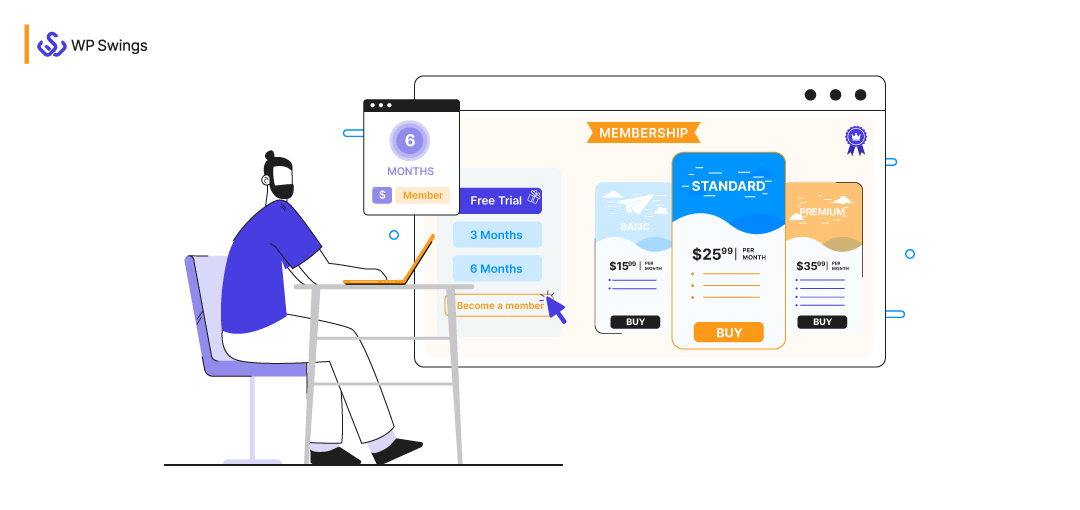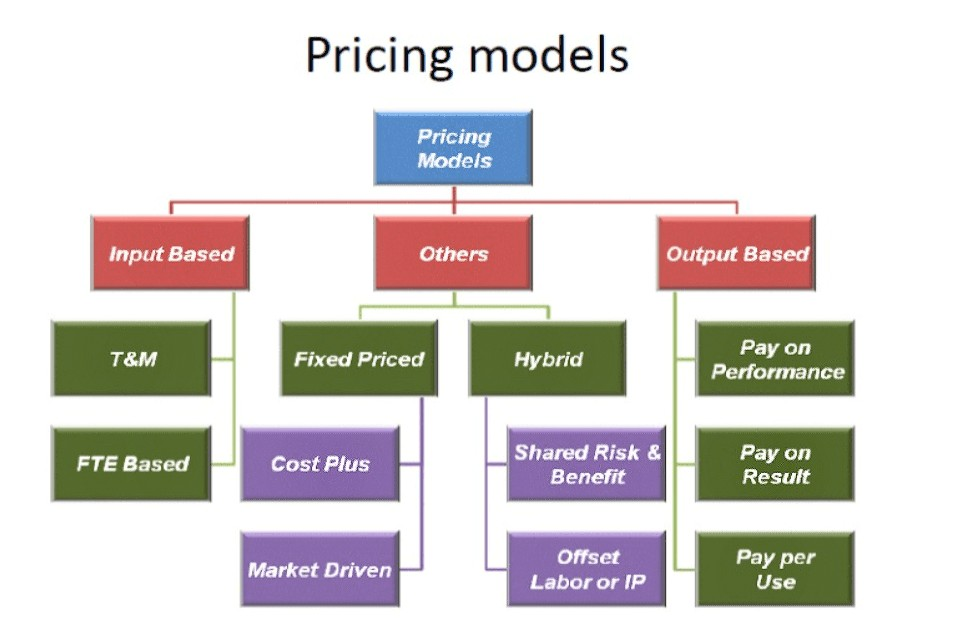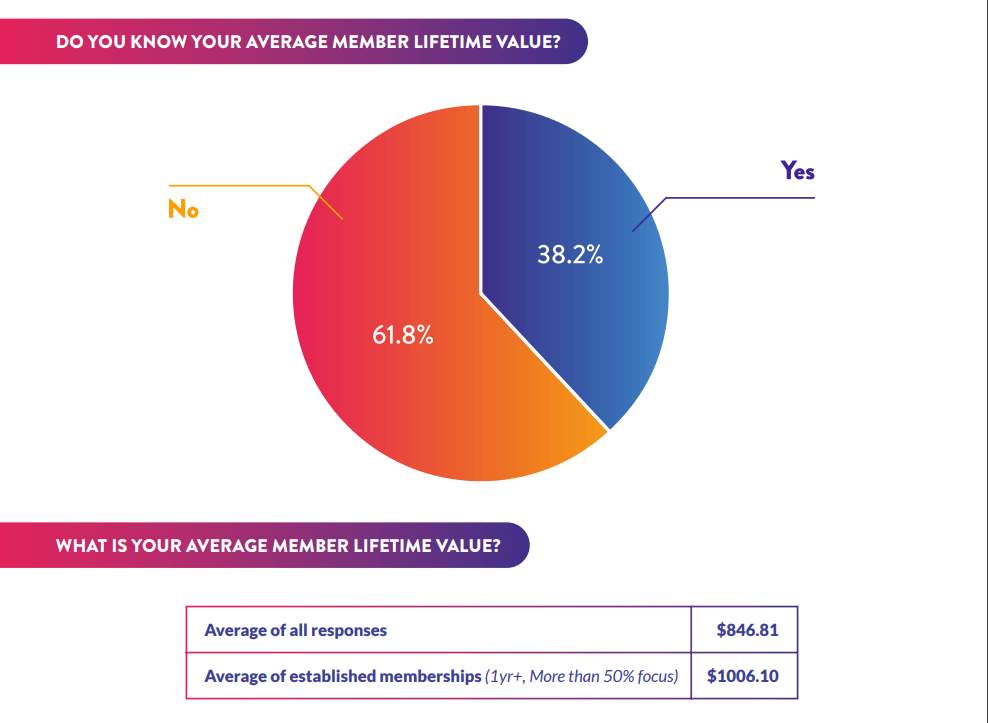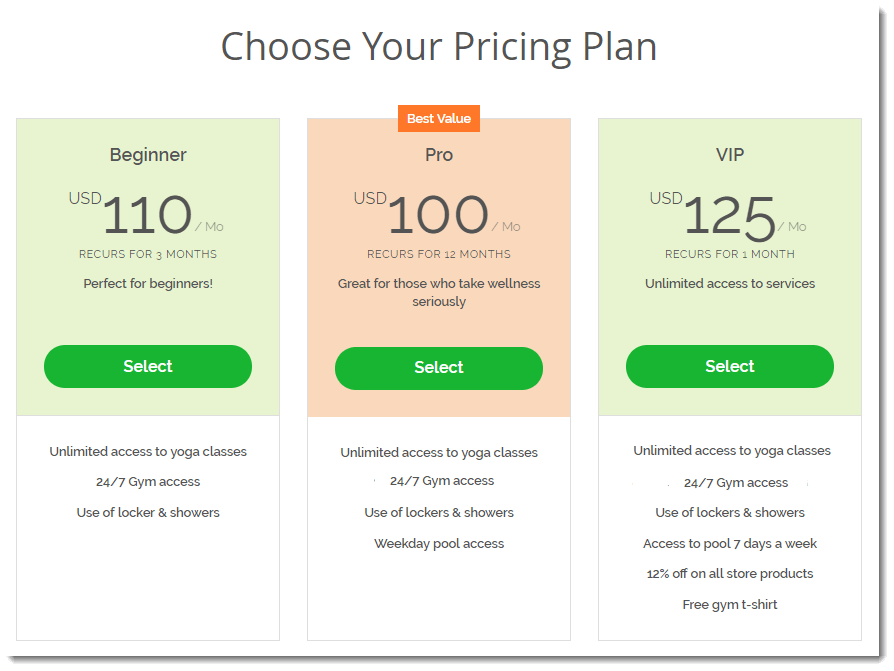
“This club is for members only. But once you join, membership lasts for an eternity.– Ellen Schreiber”
Running a membership-based business is a mammoth responsibility. You need to keep your regular customers happy and show them that what you charge is worth it. That’s where membership pricing models become important.
So, how do you come up with a price point that is fair to your members?
A pricing model that appropriately represents the value you’re giving, and covers your organization’s operating costs is the best.
Moreover, you have to figure out how to charge member dues for the first time or re-evaluate your present member pricing plan.
In this article, I’ll cover key factors for setting a good membership price based on various pricing models and strategies to choose the best pricing model according to your business requirements and needs.
So without wasting much time… Let’s get started! And dive into the best membership models
Table Of Contents
What Is A Membership Pricing Model?
You provide benefits to your members in exchange for membership dues as a membership organization. The payment structure that determines how much and how often your members pay dues is known as a membership pricing model.

Your subscription or membership business can get highly advanced depending on the perks you provide – you can include numerous tiers, payment schedule options, and discounts. Your objective is to get as many people to not just join up for membership, but to keep it year after year, therefore your pricing model should reflect their wants and preferences.
Why Are the Membership Pricing Models Important for Your Business?
Membership pricing models are crucial for business success, as they directly impact revenue and profitability.
Correctly implemented pricing models can lead to business growth, while incorrect ones can have long-term negative consequences.

Pricing excellence goes beyond product cost and includes strategy, goals, positioning, governance, tools, and company culture.
Experts with a deep understanding of customer segments and product value-to-customer are needed to determine the right pricing model.
In competitive markets with price pressure, a well-designed pricing model helps maintain competitiveness, secure value for products and services, and generate revenue for growth.
While cost-cutting and sales efficiency are important, equal effort should be invested in developing a Membership Business as a revenue generator.
Want to Create a Membership Program for Your Online Store?
Types of Membership Pricing Models
Let’s see some of the best membership pricing models
1. Tiered Membership Pricing
In a tiered membership business model, you offer different levels of membership with varying features, benefits, and pricing. This approach is often used when you want to cater to a diverse audience with different needs and budgets.
For example, a software company might offer a basic membership with limited features at a lower price, a standard membership with more features at a moderate price, and a premium membership with all the bells and whistles at a higher price.
Key points to consider when implementing tiered membership pricing:
Feature Clarity: Clearly define each tier’s features so customers grasp their value.
Price Reflects Value: Set tier prices based on included benefits, with higher prices for more features.
Upsell Opportunities: Encourage upgrades by showcasing added value. Cross-sell other products.
Member Choice: Allow customization—some prefer basic, others want premium.
Continuous Optimization: Monitor and adjust tiers for revenue and satisfaction.
Tiered membership pricing is versatile and can be applied to various industries, including fitness clubs, streaming services, software providers, and professional associations. It allows you to cater to a broader audience while maximizing your revenue potential.
2. Fixed-Term Membership Pricing
The membership level has a predetermined term with an expiration date in this pricing scheme. To keep their membership, members must renew.
This price model is frequently utilized for a calendar year’s worth of service (January 1 to December 31).

This is a common pricing model for traditional associations and organizations, as well as benefactor organizations. Both report membership on an annual basis and demand members to “renew” their membership each year.
With this pricing model, you can do things like offer a discount for early renewal. A discount for purchasing a multi-year membership in advance or even prorate membership for customers who sign up in the middle of the term.
3. Recurring Subscriptions Model
The recurring subscription model is widely adopted by various membership-based businesses, offering the stability of a fixed price charged at regular intervals, such as “per month” or “per year.” Many payment gateways even provide the flexibility to charge customers on a weekly, quarterly, or other customized basis, making it adaptable to a variety of business needs.
Numerous businesses and platforms leverage recurring subscription pricing models to their advantage. Here are some examples of industries and entities that benefit from this pricing model:
Recurring subscriptions find wide application:
- Newsletters: Regular content delivery ensures a steady income.
- Expert Platforms: Subscribers access exclusive advice, maintaining predictable revenue.
- Social Networks: Premium features sustain online communities.
- Listing Sites: Premium subscriptions enhance platform quality
Want to Create a Membership Program for Your Online Store?
4. One-Time Fee
This Membership Pricing Model is one the best and most straightforward models. Members have to pay only one time to gain access to all your content and services. The disadvantage of this model is that you lose the benefits of recurring revenue. On the bright side, visitors are more likely to sign up because they don’t feel like they are making a long-term commitment to your brand.
This model works best for those membership websites that do not require much maintenance.
For instance, fans’ sites mostly run themselves because much of the content is user-generated or a community membership dedicated to a specific genre or community like technology, forum discussion, and artist’s fanbase.
Membership Pricing Strategies
So far we’ve learned about the main best membership pricing models. Now let’s see some of the best membership pricing strategies.
1. Value-Based Pricing
Value-based pricing is a membership pricing strategy defined as considering more than production, laboring, and additional costs like marketing and hosting. It’s based on the value that your members believe the program will bring them, and that’s why it’s great for boosting profit.
To get into value-based pricing, look at your audience, look at who you’re building your membership for, and what are they willing to pay.
For example, A pro gamer may be willing to pay 40 dollars per month for the latest gaming information and interactive community whereas a hobbyist may draw the line at $20 a month
2. Competitor-Based Pricing / Market-Based Pricing
Competitor-based pricing also known as market-based pricing works If you have a small audience base to run a survey to gather data, competitor-based pricing can be a great place to start. In competitor-based pricing, you have to look at what your competitors are doing and how they are pricing their memberships.
Make a list of successful competitors that are outgrowing you in your niche. Ask your members who they were considering or subscribed to before, Use the power of growing keywords and search on platforms like Google and Quora using keywords like ‘best [you niche] videos’ or ‘best [your niche] classes’
Once you find the top competitors check out their pricing pages and their reviews and plan your pricing strategy accordingly. Make sure to look at some basic things like what features they are offering, how many pricing packages they have, and what their customers say about them
Factors to Consider While Choosing A Membership Model For Your Store
Let’s see some of the common factors that you should consider while choosing a membership model
1. Customer Needs and Preferences
Do deep research to understand your target audience and their preferences. Consider what benefits and perks would be most appealing to them and which type of content will engage them most and tailor your membership model accordingly.
For instance, a grocery store might offer a membership program tailored to busy families, with benefits such as personalized weekly memberships of meal plans and exclusive discounts on family-friendly products.
2. Value Propositions
Clearly define your value proposition, and define what you are going to offer to your exclusive members. What unique benefits or rewards will members receive that non-members won’t? Ensure that the value proposition is compelling enough to excite customers to join.
For Example, a fitness center could clearly define its value proposition by mentioning that its members will get monthly health assessments and personalized workout plans but their nonmembers have to wait a specified period to get access to the latest workout plan.
3. Cost Structure
Research the market trends and your competitors to determine the pricing strategy for your membership program ask yourself questions like will it be a one-time fee, a monthly subscription, or an annual membership?
Consider the affordability for your target audience and make sure that the pricing reflects the perceived value of the benefits your program offers.
4. Membership Tiers
Make Sure to offer multiple membership tiers with varying levels, benefits, and pricing. This allows you to cater your program to different customer segments and maximize revenue potential by appealing to a broader range of customers.
For example, an eCommerce store selling beauty products could offer three levels of membership tiers: Silver, Gold, and Platinum. Each tier offers progressively higher discounts, exclusive access to limited additional products, and personalized skincare routines.
5. Retention Strategies
Develop customer retention strategies to retain members and encourage them to renew their membership.
This may involve regularly communicating with members through emails and announcements, providing ongoing value through exclusive content or offers, and continuously evolving your membership program based on their feedback and changing customer needs.
6. Integration With Loyalty Program
If you already have a loyalty program in place, try to integrate it with your membership program. Integrating a loyalty program can enhance the overall user experience and increase customer engagement.
By combining the benefits of membership with the rewards program, you can create a complete ecosystem that can encourage customers not only to make repeated purchases but also actively participate in the program
Looking for a Plugin That is Designed to Manage Your Loyalty Program?
Wrapping Up
I hope this article has given you some ideas for pricing your new membership or a subscription-based business. Both are traditional and unconventional.
“Try and Try Again Until You Succeed!”
Same as the above statement, try a different model and see whether it works or not. The optimum price strategy for your organization will be unique to you. So experiment and see what works best for you and your member
We have talked about various types of membership pricing models, including tiered, freemium, and one-time diving into effective strategies for implementation
However, it’s crucial to carefully consider factors such as customer needs and preferences, cost structure, and value propositions when selecting the most suitable membership model. By doing so you can create a growing and profitable membership program.
If have any questions or suggestions feel free to connect in the comment section
Also, check out our WooCommerce Services for Custom Development and Offer Page for exclusive discounts.







